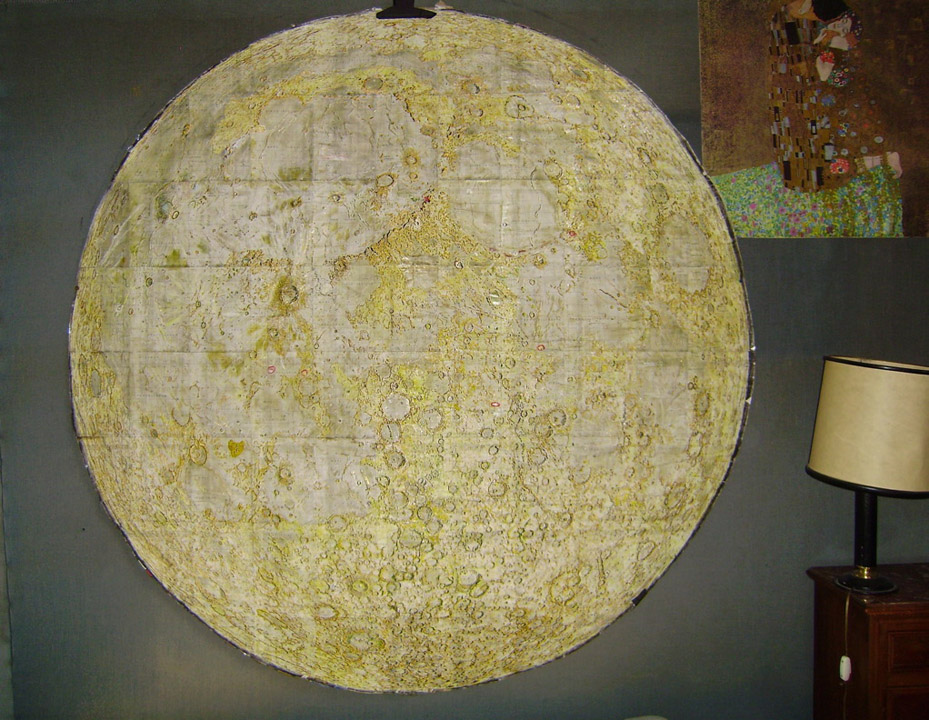Difference between revisions of "November 2, 2008"
| Line 6: | Line 6: | ||
<em>image by [mailto:Raymond2weill@aol.com Laurentt Weill]</em><br /> | <em>image by [mailto:Raymond2weill@aol.com Laurentt Weill]</em><br /> | ||
<br /> | <br /> | ||
| − | When I first came to the Astronomy Department at the University of Arizona as a new undergraduate I found a large map of the Moon mounted on the wall in a hallway. It was the [ | + | When I first came to the Astronomy Department at the University of Arizona as a new undergraduate I found a large map of the Moon mounted on the wall in a hallway. It was the [[January_16,_2004|Beer and Mädler]] map - or more likely a later copy of the original 1830s map. But it was big and impressive, and I didn't even know anything about the Moon then. I've always liked wall maps of the Moon, as does Laurentt who photocopied the 72 map sheets from his copy of Rükl's <em>[[November_19,_2004|Atlas of the Moon]]</em> and taped them together on his wall. He spent about a year laboriously coloring the details with colored pencils. You will notice the red circles for Apollo landing sites and some features - perhaps of personal interest - have been emphasized. The map is 180 cm wide (71 inches) and shares space with Klimt's <em>[http://www.ibiblio.org/wm/paint/auth/klimt/kiss/ The Kiss]</em> (whose original is also 180 cm wide)!. Now we know how the Moon equals a kiss!<br /> |
<br /> | <br /> | ||
<em>[mailto:tychocrater@yahoo.com Chuck Wood]</em><br /> | <em>[mailto:tychocrater@yahoo.com Chuck Wood]</em><br /> | ||
Latest revision as of 22:25, 22 March 2015
A Wallfull of Rükl

image by Laurentt Weill
When I first came to the Astronomy Department at the University of Arizona as a new undergraduate I found a large map of the Moon mounted on the wall in a hallway. It was the Beer and Mädler map - or more likely a later copy of the original 1830s map. But it was big and impressive, and I didn't even know anything about the Moon then. I've always liked wall maps of the Moon, as does Laurentt who photocopied the 72 map sheets from his copy of Rükl's Atlas of the Moon and taped them together on his wall. He spent about a year laboriously coloring the details with colored pencils. You will notice the red circles for Apollo landing sites and some features - perhaps of personal interest - have been emphasized. The map is 180 cm wide (71 inches) and shares space with Klimt's The Kiss (whose original is also 180 cm wide)!. Now we know how the Moon equals a kiss!
Chuck Wood
Technical Details
Photocopy machine, scissors, tape and pencils.
Related Links
Rükl plate: All of them!
Yesterday's LPOD: An Old Fault?
Tomorrow's LPOD: What's New?
COMMENTS?
Register, Log in, and join in the comments.



